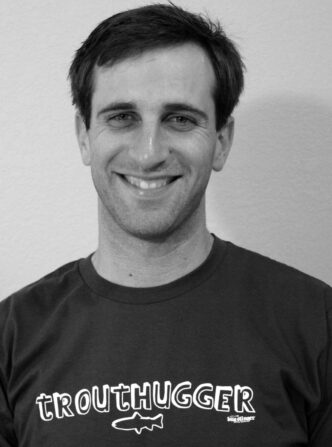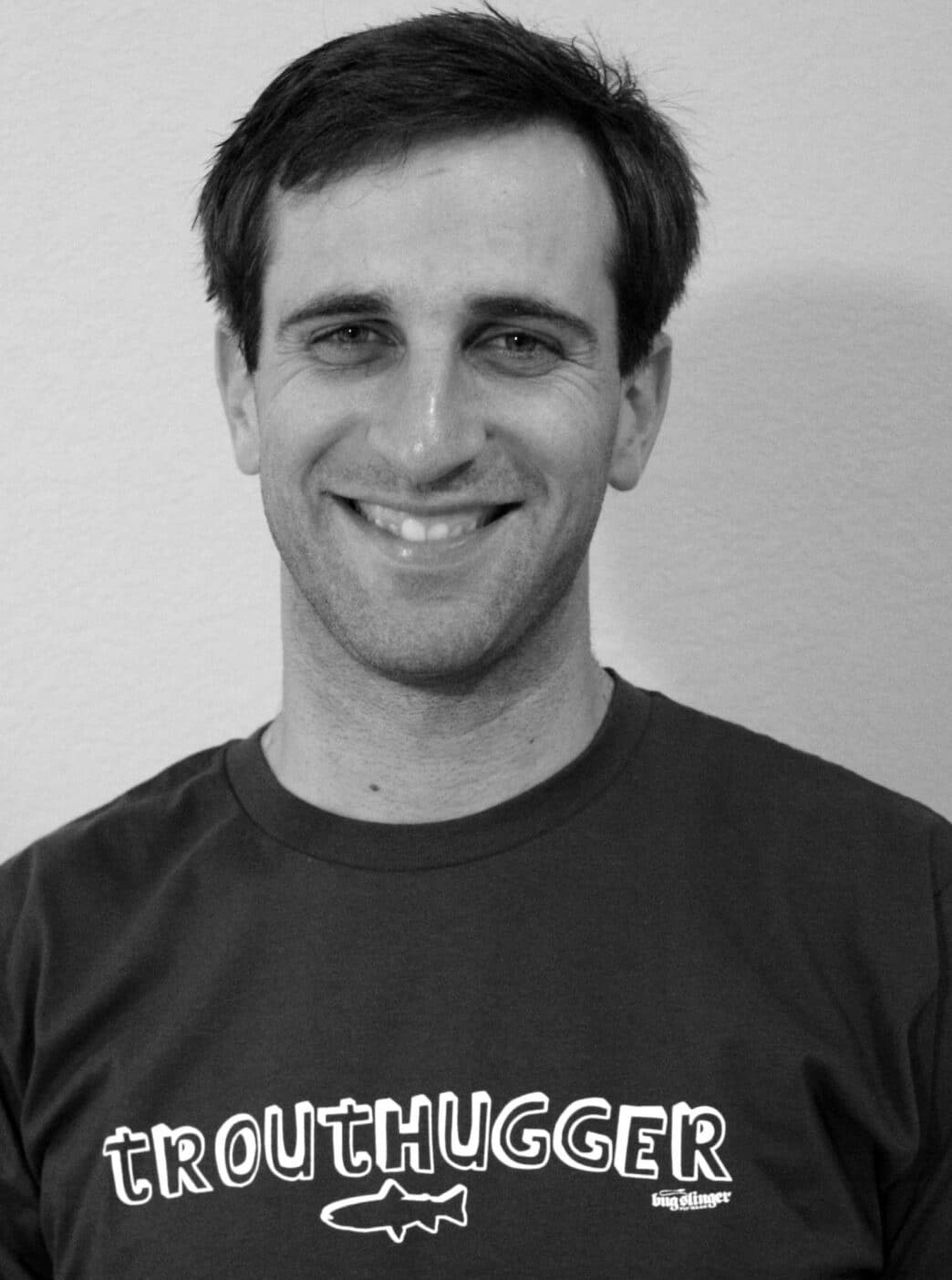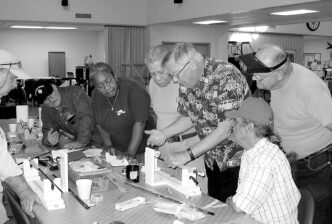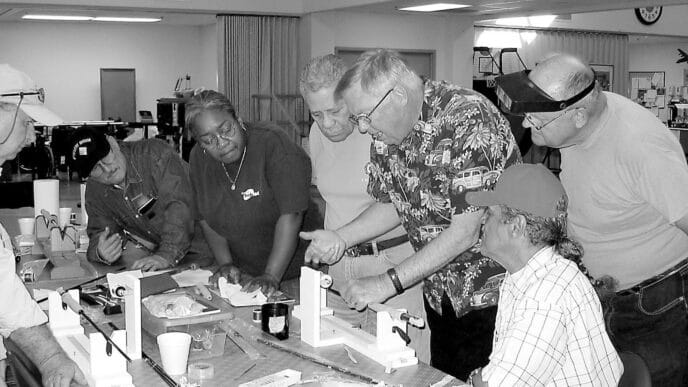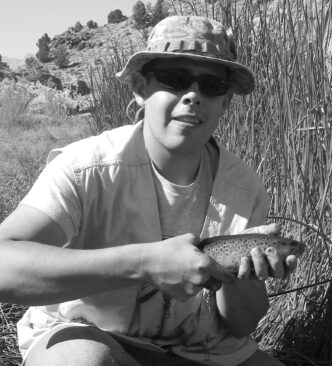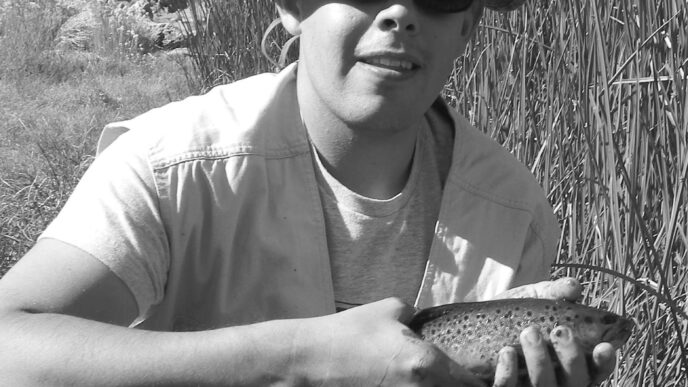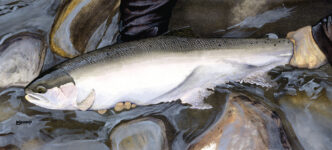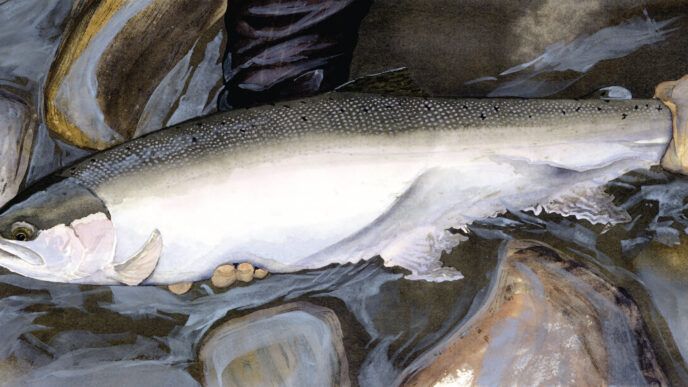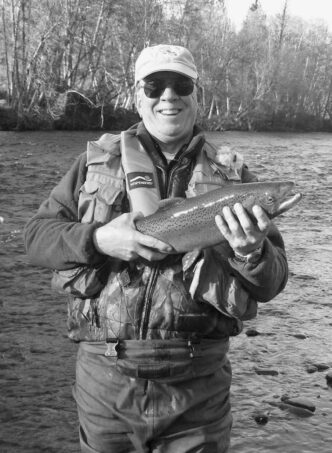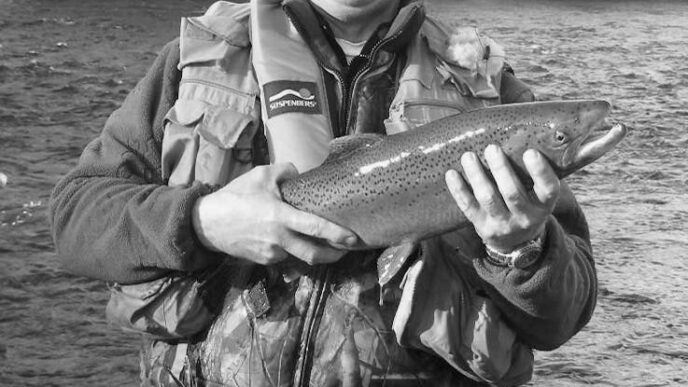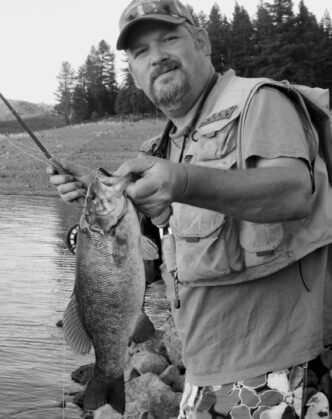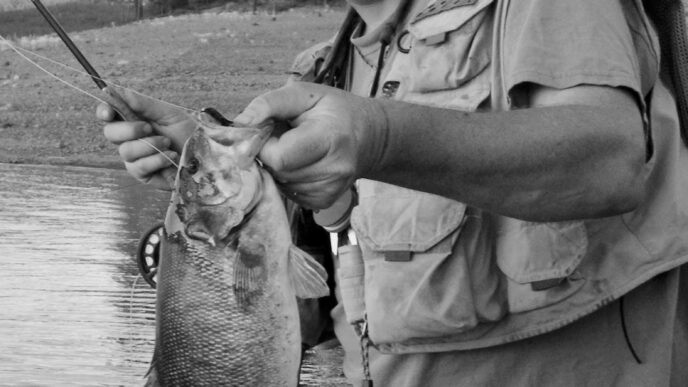What is fly fishing? That’s not just a question for purists to debate over their drams of single malt. It concerns the present course and future prospects of the sport. One answer is that it is what it always has been, a pursuit that involves catching fish, but also much more than catching fish — a way of being in the world and approaching life. How we come to know about this larger sense is diverse and various. Parents pass it on to their children — or at least they try to do so. But there are other ways that the dharma gets transmitted.
Justin Coupe’s film Rivers of a Lost Coast is a part of that process of transmission. Together with his film-making partner, Palmer Taylor, Coupe, a recent U.C. Santa Cruz graduate and child of a flyfishing family, was able to reach across the generations to connect with the anglers who lived through the glory days of fly fishing for Northern California’s steelhead and salmon. The result, in both the film and this interview, is a clear vision of what fly fishing is — what it was, can be, and what its future may look like.
Bud: I’ve read that you’re a sixth-generation Californian. That’s a whole lot of generations in a state known as a haven for the rootless. So tell me a bit about the genealogy of your family.
Justin: Coupes are spread throughout Northern California, but probably concentrated most heavily in the Marysville and Yuba City area. To our knowledge, Henry Coupe of New York was the first to set up permanent residence in California. I’m unsure whether he arrived before the Gold Rush or in the masses that stormed the state shortly after. He was a timberman and owned a logging mill on a substantial tract of land between Bullards Bar and Lake Oroville. There was a small town called Challenge, which derived its name after the Coupe family mill defeated a neighboring mill in a “challenge” to see who could cut the most board feet of lumber over a weekend. Frank Hendrickson, my great-grandfather, owned and operated the Challenge general store before moving to Oakland. This past summer, there was a Coupe family reunion at the site of the old mill.
Walter Coupe, Sr., a paternal great-grandfather was the deputy state forester (number two in command) and was a major contributor to various innovative and successful approaches to fighting California wildfires. Most notably, in the 1930s, he helped take wildland fire responsibilities out of the hands of the counties and put them under state control. In a state publication written in the late 1960s by C. Raymond Clar regarding the history of the California Department of Forestry, Clar described Coupe Sr. as “short in stature, tough in body, quick tempered and thoroughly dedicated to his work” — traits that have plagued the Coupes ever since.
My grandpa, Walter Jr., was a highschool teacher and a captain in the navy during World War II. Their four children, including my father, grew up on U.S. naval bases in Japan, Guam, Spokane, Washington, and Norfolk, Virginia before returning to California’s Bay Area. All four children eventually returned to the Sacramento/Auburn area.
My mother’s family is more typical of California genealogy. Her parents moved from the East shortly before she was born. Her father was an aeronautical engineer and helped design the cockpit of the L1011, I believe the original plane model of Air Force One.
Bud:I gather that your dad was a fly fisher, but I’ve also read that you first cast a fly for steelhead on the North Umpqua at the age of 12. That sounds like making your first appearance on the tennis court on the Center Court at Wimbledon. When and how did you start fly fishing and how did you begin steelheading in such a challenging place?
Justin: As long as I can remember, my dad was fly fishing. Growing up, he and mom would load the whole family into the Blue Bomber (a powder-blue 1978 Ford RV of sorts) and head out toward the water. I was the youngest of four children, and many of my earliest memories are of my dad and his floppy fishing hat at Cassel Campground or Manzanita Lake.
I don’t know at what age I started fly fishing. I remember at eight or nine going out with him during damselfly hatches and watching the water churn as schools of trout progressed in gross displays of aggressive indulgence. There was one moment that I remember vividly. It was the two of us in a 10-foot fiberglass pram. There was a trout cruising along the edge of a channel six or seven feet beneath the surface. The fish swam slowly, naturally, with punctuated jerks to the left and right, picking off swimming damsels. My dad saw the trout, too, and made a cast. I remember watching the fish turn toward the surface and rise four or five feet to my father’s fly. I saw the white of the trout’s mouth open, and shortly after, violent head shakes. My dad handed me the rod. That was the first time I ever felt a fish with substantial power on a fly rod. It ended up being a sevenor eight-pound trout. But the thing that really grabbed my imagination that day wasn’t so much the power of the fish, but that my dad knew how to make it move. He knew what it was doing, knew what it was looking for, knew where it was going. Unlike what happens with a lot of damsel grabs, the fish took the fly slowly. This was even more shocking to me: My dad didn’t catch the fish — he tricked it. He went into its world, and his presentation passed for the real thing. The fish didn’t seem nervous or suspicious. Dad didn’t entice the fish — he completely fooled it. That kind of manipulation was a pretty exciting concept to a kid my age
I haven’t fished the North Umpqua very many times, and to clear the record, I made a movie about steelheading, but I am not, nor have I ever been a very good steelheader. My dad took me to the North Umpqua when I was 12, and I remember him purposely scaring the living hell out of me about wading the river. I don’t think he even fished much — he was so nervous about me and the ledges, the slippery rocks, the current. The river was gorgeous. I remember the sound, the low hum you hear in the canyon as you move away from white water. It was a really peaceful white noise. The first afternoon, we fished with North Umpqua regular Wes Shiroyama in front of Island Campground. I was distracted by the smolts and had more fun catching them on little dry flies than doing all that work to cast streamers in the current. There were some older fishermen on the shore frowning upon me, and I remember not understanding why at the time.
Bud: If you’re like most guys, school, other sports, girls, and the like eventually tend to eclipse fishing, at least for a while. But nobody really fits the “most guys” profile. What happened to your interest in fishing as you grew up and went to college? There is fishing, after all, around Santa Cruz — even steelhead fishing, of a sort, however much diminished.
Justin: I played sports in school, and that was important to me. But fishing has always been really intertwined with our family. The majority of our family vacations revolved around fishing. The last weekend in April at Hat Creek, Memorial Day at Davis Lake, the Fourth of July at Lassen, and every July we went to Oregon. We have a special place in our hearts for central Oregon. For over 30 years, my family has been meeting up with a handful of other families there. The trip revolves completely around fishing. We’ve never missed a year. My birthday is on July 23, so every birthday I’ve ever had, I’ve spent with my family fishing with our closest friends. Fishing has become much of our family’s fabric — I’ve never really swayed away from it.
College was interesting. I started out at U.C. Santa Barbara, and that was a long way from my fishing partners in Sacramento. I tried fooling around at Lake Cachuma, fishing the river above the lake. I guess there’s some good trout in the river, if you know what you’re doing, but I didn’t. I started fishing for surfperch off of Campus Point. A surfer down the hall would see me out there and always asked me to keep a perch so he could fry it up on his Foreman Grill back in the dorms.
I dated a girl at Cal Poly and was up in San Luis Obispo a lot. One day, walking through downtown, I saw about a 10-pound steelhead spawning in the creek. I checked the regs, and the next weekend, I drove back up to the estuary with my rod. I found out that farther up the coast, there were a few more creeks with great-looking estuaries that all had steelhead in them. It’s pretty ridiculous, but I grew up a stone’s throw from the American River and hooked myself on steelhead while living in Santa Barbara. When I moved up to Santa Cruz, the game was the same, but there were quite a few more creeks with a little more water.
Bud: If I read the timeline correctly, you and Palmer Taylor got onto this topic pretty much around the time you got out of college. One of the things that’s most striking about the movie is that it’s an intergenerational thing. It tells the story of the loss of an abundance that a previous generation had — what it’s been like for them “to lose their soul, to lose their fish,” as you put it in one interview (http://www.youtube.com/watch?v=TK4z0_-qKeI). And it speaks to both present and future generations about the significance and implications of this loss. That’s a lot to take on. What combination of serendipity and destiny positioned you two to do it?
Justin: There wasn’t any serendipity or destiny. We were really naïve. Destiny would have been reserved for someone like Russell Chatham or the North Coast artist Conrad Calimpong. Those two had a keen sense for observation and were really in tune with Ted Lindner and Bill Schaadt. Palmer and I were young and green. We didn’t have the first clue to what we were getting into. The project morphed and exploded as we progressed.
The thing that allowed us to complete the film and not be overwhelmed was our relationship and trust with each other. We’d met playing tennis for U.C. Santa Cruz, and through that experience, we learned to depend and rely upon each other. During the production, we hit a lot of roadblocks, and without that trust, we could have easily thrown in the towel and walked away. You need that kind of trust to complete a long-term project like Rivers. You also need an incredible support system. My wife was tremendously supportive and understanding over the four and a half years of filming. We put a lot of things on hold to give me the freedom to finish the film. She was really wonderful.
Palmer and I always told people we were the only two people who had the time, energy, and background to make this film, but that’s not true. We told that to ourselves to try to justify our time investment. If you think it’s destiny, then it’s a lot easier to overlook all the reasons why you shouldn’t be doing something.
Bud: There seem to have been two basic problems that you confronted when making the movie. One is that coastal steelheaders are a secretive lot and don’t open up to strangers, and the other was the barrier between generations: Why should these people trust a couple of young dudes from Santa Cruz? How did you overcome those barriers?
Justin: We knew a few people in the crowd, and they helped us out by spreading the word before we started contacting people. That only went so far. At first, it was slow, and in hindsight, it never really sped up. You had to be able to speak the lingo, you had to do your research — know the names they were going to bring up — and you had to know whether or not they liked Schaadt. All those were crucial to get people’s trust. There were a lot of people we talked with for hours and hours on the phone and they never did agree to do an interview on camera. I respect their decisions. If someone a generation or two younger than me said he was going to make a movie about some of my most cherished trips with my dad, I wouldn’t give them the time of day. In the end, we spoke the lingo, and as Al Perryman said in a quote that we didn’t use in the movie, “Fishermen are fishermen, and if you’re genuine with your passion, they’ll accept you.” I think after a while, people could see our intentions. Of course, for all that, we still screwed up sometimes. In the movie, we say that Ted Lindner retired at age 50 and immediately traveled north to start fishing. He retired at age 57, shortly after ending a 10-year marriage, and then traveled north.
Bud: You’ve said that when you began the project, “there just weren’t that many young anglers taking an interest in the sport.” That’s one of the worries about the future of fly fishing in general. What kinds of promises and problems do you see for engaging new generations of people in fly fishing in California?
Justin: The thing that will always propel a small portion of the population into fly fishing is its mystique. I think that’s what piques everyone’s interest at first. People don’t quite understand how the casting works or how the whole process goes. A lot of people have a perception of fly fishing as a very peaceful way to connect with nature, they’re intrigued by its challenge, and they like the public image that fly fishing tends to have. Unfortunately, I think a lot of people get into fly fishing to try to fit into a mold or perception of the kind of person they want to be.
Instruction is not the problem — there is a wealth of knowledge out there for new fly fishers to grab hold of and get up to speed. My generation and following generations have become increasingly comfortable getting what we want when we want it. For fly fishing to appeal to my generation, one has to have measurable success in a short period of time. The industry has compensated for this with easier-casting rods, numerous competent guides, strike indicators, ready-to-go setups, and countless hours of searchable resources on-line. With these tools, today’s novice can be assured a greater chance at success with a less of an investment of time than a novice angler who began in the 1970s or 1980s. The industry wants more people to fly fish — this grows the community, the clientele, the business, and, we hope, increases the number of voices speaking for our resources. This is important — point taken.
However, in many ways, the lowered bar to entry and advancement in fishing methods creates a conundrum in the sport — at least, that’s what I’ll call it. The experience of fishing in a guided boat, with equipment that is prerigged, and lobbing out a cast with a strike indicator is not the same experience that an angler had who toughed it out 30 years ago. It is not a bad experience — it provides a greater chance of immediate gratification and is probably a necessary step in introducing the sport to an impatient generation fishing in a time of dwindling resources. But it is still not the same experience, and ultimately, it erodes the greater gratification that continually pulls us back to the water.
The reason we return year after year to our favorite haunts, our foggy riffles and hidden coves, isn’t because we are assured that we will succeed. At some point, our desire for guaranteed success is surpassed by a sense of fulfillment that we can find nowhere else. Every spring, I hike through a forest of poison oak, loose dogs, and barbed wire to fish a small Sierra stream. The elevation is low, about the lowest point along the stream capable of supporting trout year-round. The overbrush makes casting nearly impossible, the trout are small, and my car’s been broken into twice while I was on the hike.
I do not return for the fishing. I return because it is important for me to know that the trout are still there. I want to know how winter flows changed the creek bed and if fish were able to spawn successfully. I want to know that my connection to that water, to those fish, to that environment, still exists.
The core of our experience is the intangibles we pick up and absorb during our lifelong investment. Our knowledge and connection to time, location, and species cannot be purchased or accelerated to suit our evaporating patience. Unlike professional sports, where a governing body can adjust rules and regulations to ensure that the sport meets the expectations of shifting public opinion, fly fishing is a singular act, thankfully void of a governing body ready and willing to screw it up. If the act of fly fishing changes to suit our need for immediate gratification, then it erodes the very experience that has captivated so many of us over our lifetimes. Have you ever met a lifelong fly fisher who appreciates it less now than when he or she started? Impatient generations will learn patience and investment in what matters in the long run through fly fishing, or they will do one of two things: leave the sport, or fish at times and locations that will ensure they succeed. The industry knows this. Diminishing resources and an unwillingness to invest the proper time are creating a boom in pay-to-fish destinations. I think this is a lesser experience. It is not a bad experience, and this is not the industry’s fault — this is of our own making.
Bud: You’ve pretty much been living the life of the trout bum once removed: Trout bums chase trout, even if they have to live on ramen, beer, and adrenaline. You seem to have been living the same way, but chasing anglers, rather than fish. Have you actually been able to fish during the years you were pulling the elements of this movie together?
Justin: I fished a lot more before Palmer and I started this project, but I think that had a lot to do with that time of life. Starting with my last year of high school and until I was about 26, my dad and I would hit the road each summer and fish all over North America. Looking back, it was an incredible opportunity.
During the filming, Palmer and I fished a little bit, but it wasn’t like many of the adventurous fly-fishing films that are out there today. Those guys have it figured out. They have the investor or DVD sales pay for their fishing trips. My wife and I fish together — she was given a new fly rod by close friends as a wedding present. Dad and I still fish as much as we can. I started fishing closer to home a lot more because of time constraints. Striper fishing is a lot of fun, but I’ll still drive all night for big rainbows.
Bud: Here we are at the now obligatory Silly Tree Question that closes our interviews. If you were a tree, what kind of tree would you be?
Justin: I handed this one off to the wife. She tooled around on her laptop and said, “This one.” On her screen was a picture of a sausage tree. Not the kind you’d find in Zambia — this beauty was a two-foot-tall collection of foliage covered in sausage slices, cocktail weenies, smoked ham, and salami. A rare beauty.



